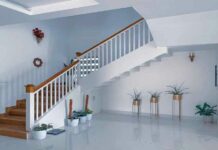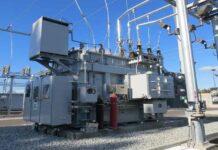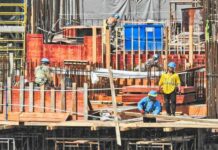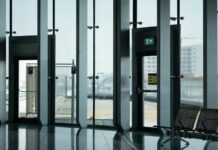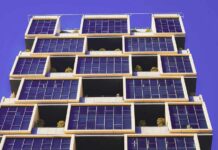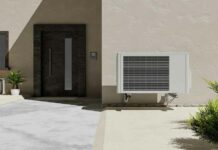The construction of energy efficient buildings is a primary concern for designers, engineers, architects, and construction professionals around the world. Amid tightening government regulations and an increasingly conscientious consumer base, commercial facilities have little chance of success without the proper energy efficiency infrastructure in place. While there are various methods of enhancing a commercial building’s eco-friendliness, one impactful solution is through the implementation of a comprehensive air barrier. In this breakdown, we will explore air barriers from all angles and examine their crucial role in creating energy efficient commercial structures.
What Is an Air Barrier?
An air barrier resists air leakage and forms a continuous plane around a building to prevent uncontrolled airflow through the building envelope. The best continuous air barrier solutions use a combination of interconnected materials, assemblies, and sealed joints to minimize air leakage caused by pressure differences between the interior and exterior of a commercial structure. Some common forces that cause pressure differences and air leaks in commercial buildings include high winds, extreme interior/exterior temperature differences, and imbalances between supply and exhaust air systems. By reducing the risk of air leakage caused by these forces, air barriers promote energy efficiency while fortifying the building’s structural health, ensuring ongoing viability amid tightening sustainability initiatives.
How Does an Air Barrier Improve Energy Efficiency in Commercial Buildings?
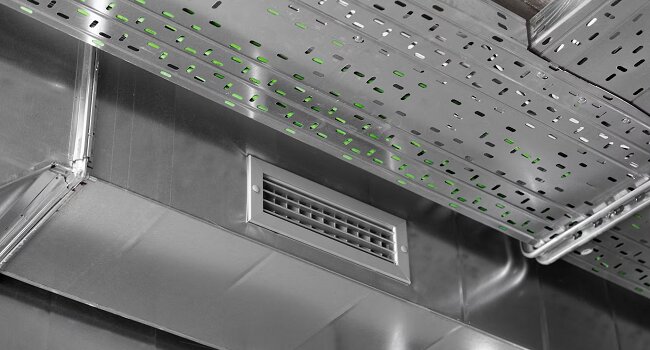
The primary energy efficiency benefit of air barriers comes from their role in limiting unwanted air transfer. By keeping extreme air temperatures outside and conditioned air temperatures inside, commercial buildings can greatly limit their HVAC consumption.
However, the energy efficiency benefits of air barriers extends beyond reduced utility consumption. By limiting deterioration and maintaining compliance with modern building codes, air barriers can minimize ongoing resource consumption for repair and renovation.
Types of Commercial Air Barriers
Modern air barriers have moved away from mechanically-fastened products to fully-adhered options. There are two primary choices for fully-adhered air barriers for commercial structures.
Self-Adhered Air Barriers
Self-adhered air barriers are rather simple to install. With no mixing or spraying equipment required, air barrier sheets are applied directly to structural walls. They are ideal for use with open joint claddings and can bridge gaps and cracks without additional detailing. While the “peel and paste” application of self-adhered air barriers is relatively straightforward, care must be taken to ensure even application. This prevents wrinkles and bubbles that can allow air to get between the barrier and structural wall.
Fluid-Applied Air Barriers
Fluid-applied air barriers come in roll, spray, and trowel applications. They eliminate the risk of wrinkles and bubbles inherent to self-adhered options and are the better option for complex geometries. This makes them ideal for irregular substrates. The highest-quality fluid-applied air barriers come with fast-curing technology that allows construction projects to remain on schedule. If there is a downside to this type of barrier, it is that skillful application is required to arrive at a correct and consistent barrier thickness.
Differences Between Air Barriers, Vapor Barriers, and Water-Resistive Barriers
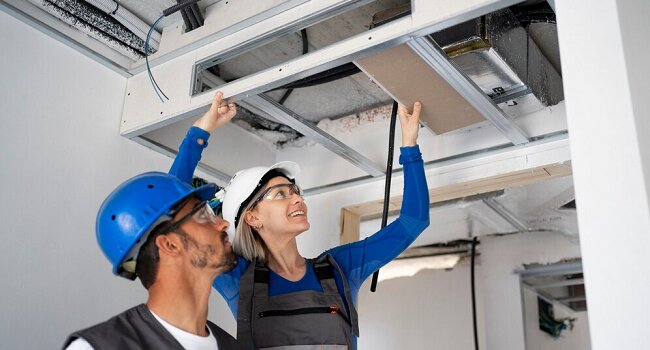
Even seasoned industry professionals sometimes use the terms “air barrier,” “vapor barrier,” and “water-resistive barrier” interchangeably. While there is some overlap and complementary benefits of these barrier types, they contain some distinct nuances that must be carefully considered to ensure the optimal building envelope.
A vapor barrier limits the amount of water vapor diffusion through the walls of a commercial building as a result of different vapor pressures. They must be continuously sealed and free of holes to maximize performance. While the implementation of vapor barriers is undoubtedly beneficial in cold climates at risk of condensation and very hot, humid climates, standard airflow contains up to 100 times more water than that of vapor diffusion. This means that an air barrier will offer far greater protection to commercial buildings in a wide range of climates than a basic vapor barrier will.
A water-resistive barrier serves a fundamentally different function than an air barrier. It keeps flowing liquids from entering the building enclosure. Flashing, permeable membranes, and bonded fiber tapes are just some of the components found in water-resistive barriers. These components all work unison to keep flowing water on the exterior of a commercial structure.
At the end of the day, there would be no need for both an air and vapor barrier in a commercial building. An air barrier is the superior option for limiting air- and vapor-related water intrusion. However, as it serves a distinct purpose to that of a water-resistive barrier, both an air barrier and water-resistive barrier should be included in a commercial building to protect it from the elements and optimize the energy efficiency of its building envelope.
Choose the Right Air Barrier for an Energy Efficient Commercial Building
A comprehensive air barrier is a crucial component of a well-fortified building envelope. It reduces air transfer into and out of the building, promoting energy efficiency and structural longevity. For more ideas on how to incorporate air barriers into commercial construction projects, explore the resources at World Construction Today for the leading insights in the industry.




